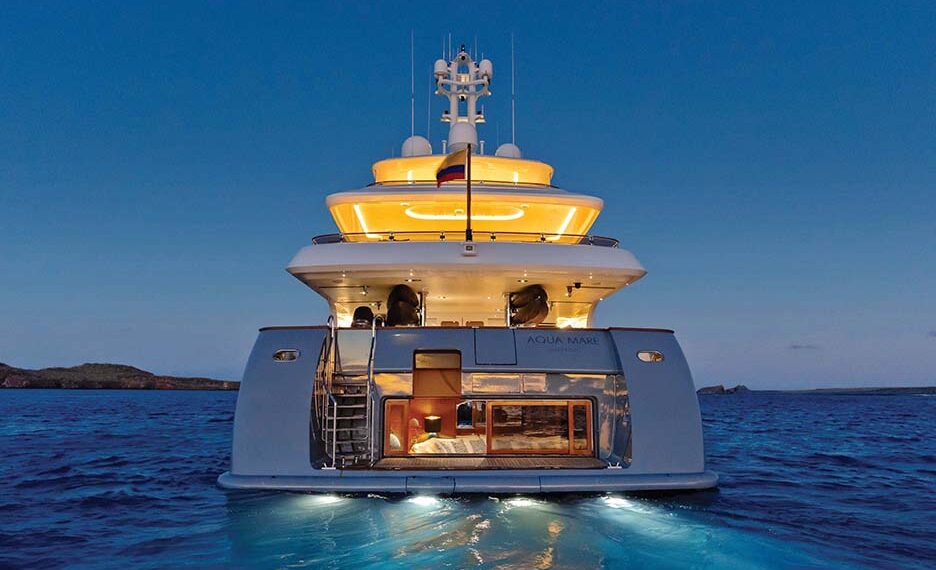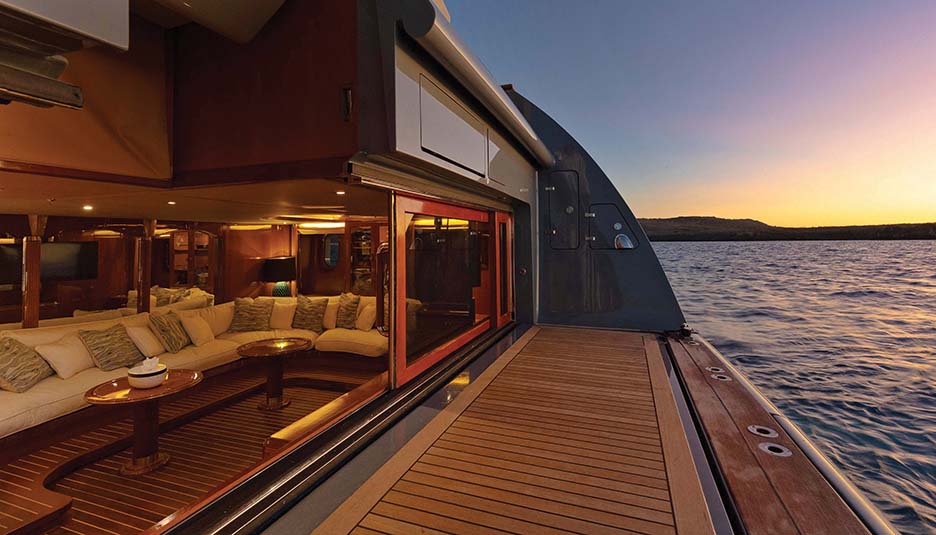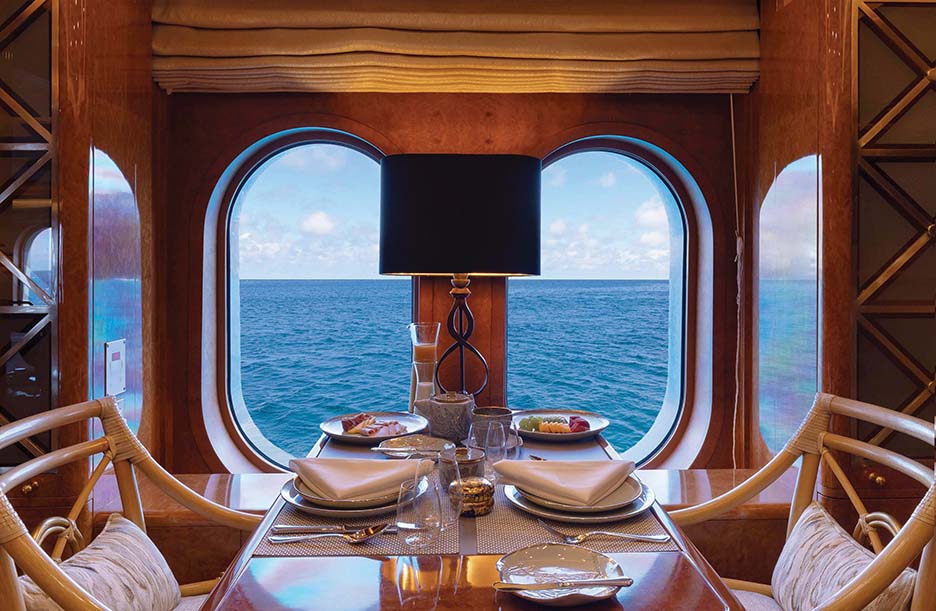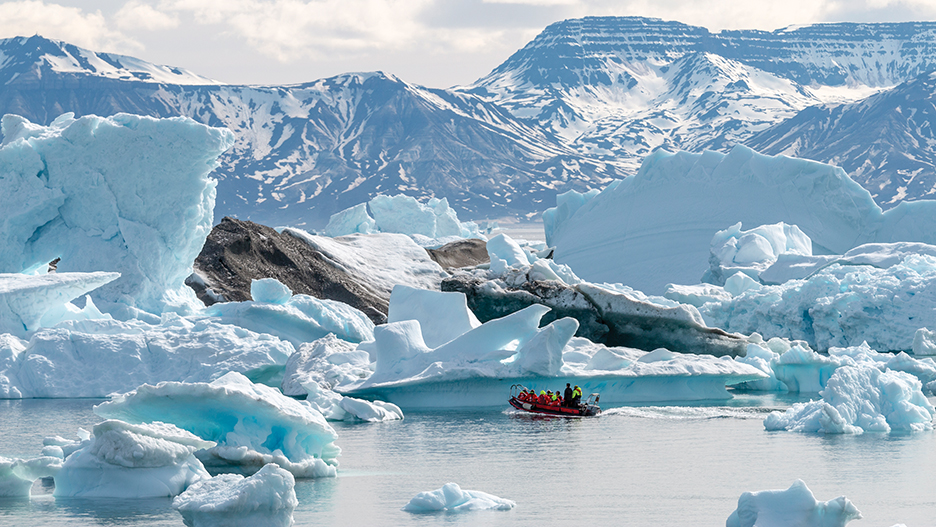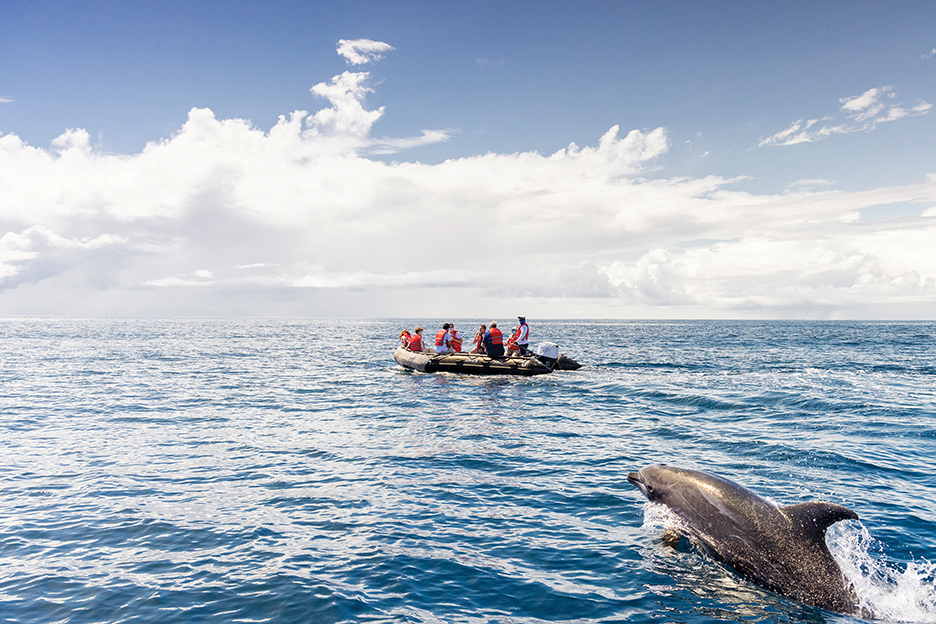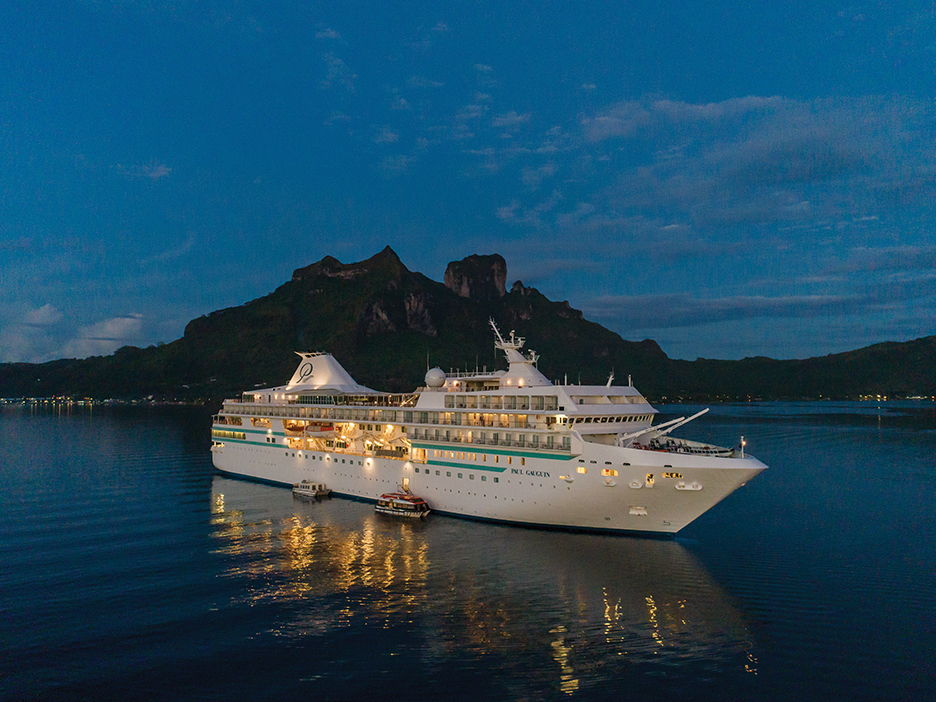By Roger Grody
The traditional cruise experience — sharing a megaship with 5,000 fellow passengers, binging at midnight buffets and disembarking at tourist-clogged ports-of-call for superficial guided tours — may no longer be inviting, especially for active travelers. But with exciting new destinations, more intimate (albeit luxurious) ships and hands-on activities, cruising has newfound appeal.
Since the pandemic, many seabound tourists have turned their attention to smaller vessels and once-in-a lifetime destinations such as Iceland, the Galápagos Islands or, the holy grail of bucket list adventures, Antarctica. Many compelling itineraries cannot accommodate megaships and require more active participation by passengers to fully appreciate them.
Gary Bembridge is a London-based journalist who has authored “The Cruise Traveler’s Handbook,” “Essential Cruise Tips” and “The Cruise Travel Guide,” among other books, and chronicles his frequent voyages on the writer’s own Tips for Travellers website. He reports that while interest in smaller vessels is increasing, even the large carriers are introducing more unique ports-of-call and activity options to address evolving consumer preferences. Because of the price differential — Bembridge advises it can cost up to seven times more to cruise on a high-end small vessel than a mainstream line’s megaship — small ship cruising remains primarily a luxury indulgence.
Bembridge cites Oceania, Windstar and Star Clippers as lines providing luxury experiences in a smaller format, including yachts and sail ships. “In addition to the obvious ‘expedition’ locations like the Galápagos, Arctic, Antarctica and Greenland, there’s emerging interest in going to more well-trodden destinations, but with a greater focus on exploration and wildlife,” states Bembridge of developing trends.
Aqua Expeditions was founded by Francesco Galli Zugaro in 2007 to introduce exciting new destinations — think Indonesia’s Komodo Island, the Galápagos Islands and Mekong River — to travelers seeking adventure on a more intimate scale. The company’s Aria Amazon, a vessel that traverses the legendary river at the Pacaya-Samiria National Reserve in Peru, offers just 16 river-facing suites with floor-to-ceiling windows and serves the cuisine of renowned Peruvian chef Pedro Miguel Schiaffino.
Aqua Expedition’s Aqua Mare, an exclusive superyacht deployed to the Galápagos Islands, accommodates just seven exquisite suites (including a lavish owner’s suite) designed by the firm of François Zuretti, acclaimed for sophisticated yacht interiors. The Aqua Mare presents a luxurious yet environmentally conscious means of exploring one of the most unique natural habitats on the planet.
Explaining that Aqua Expeditions represents the “experiential travel” niche — operating in the same sphere as African safaris — CEO Galli Zugaro states, “Most of our guests have never been, nor plan to go on a big ship.” He adds, “This audience wants to see remote parts of the world, go on adventures in the day, then return to a floating base camp that’s on par with any world-class hotel.”
“What we’ve noticed since the reopening of travel is that guests no longer want to wait until later in life to tick off bucket list destinations, but want to experience them now,” says Zugaro. He reports, “With mainstream cruising we see a median demographic of 60 years and above, but with Aqua Expeditions our demographic begins at around 40.” Explaining that his line’s river cruise itineraries are just as active as open sea voyages, he states, “Where a younger client may think that river cruising is something for older travelers, Aqua stands apart.”
“Luxury travelers will continue to seek world-class experiences to remote and exotic destinations that give them a sense of place without sacrificing the comforts they’ve come to expect from five-star hotels,” says Zugaro, who insists luxury and sustainability are not mutually exclusive. “From the very beginning, Aqua Expeditions has been committed to making sure we do our part in contributing to local communities and protecting the pristine areas in which we sail,” says the cruise line’s chief executive.
Ponant is a French line known for luxuriously appointed small ships, five-star service and commitment to sustainability. The vessels that make their way to exotic destinations such as Antarctica, the Maldives and Madagascar typically accommodate no more than 250 passengers, sans the garish casinos, water parks and zip lining associated with the megaships.
On Ponant cruise liners, guests enjoy refined design, a culinary staff affiliated with renowned chef Alain Ducasse, world-class wellness programs, and the presence of experts to engage passengers as they explore unique natural environments or historic sites.
One of Ponant’s most expensive tours is a 28-day excursion to Antarctica — beginning in Ushuaia, Argentina and concluding in Lyttleton, New Zealand — aboard the 245-passenger Le Commandant Charcot that boasts nearly a one-to-one passenger-crew ratio. Prices begin at more than $50,000, but ascend well above $100,000 for those booking larger staterooms, including an extravagant 1,237-square-foot suite de l’armateur (owner’s suite).
Ponant also operates Paul Gauguin Cruises, specializing in excursions to French Polynesia on the firm’s signature MS Paul Gauguin, a luxury 330-passenger vessel outfitted by the studio of Parisian architect Jean Philippe Nuel. Large staterooms with ocean-view balconies and butler service, fine dining and a spa are among the amenities that distinguish this high-end boutique line.
Demonstrating Ponant’s commitment to environmental awareness and activism was its leadership role in the recently convened Blue Climate Summit aboard the MS Paul Gauguin. Attended by Prince Albert II of Monaco and President Édouard Fritch of French Polynesia, the convocation drew 250 scientists, policy makers, business leaders and environmental activists.
“There has never been a more important or urgent time for the world to address ocean protection and climate change,” stated Stan Rowland, CEO of Blue Climate Initiative, sponsor of the inaugural event. Proud that the MS Paul Gauguin was selected as the host ship, Ponant CEO Hervé Gastinel submits, “The partnership with Blue Climate Summit is a natural fit, as we also have ambitious objectives to protect the ocean and the communities our ships visit.”
Considered a premier small-ship line by cruise journalist Gary Bembridge, Windstar Cruises is known for its luxurious vessels, including wind-assisted sailing yachts. The company recently announced its first Red Sea/Persian Gulf itineraries, some which pass through the Suez Canal, for those weary of the usual Caribbean or Mediterranean ports-of-call.
The new cruises include some of the region’s most alluring destinations and travelers can enjoy the voyages on Windstar’s traditionally themed Wind Class sailing yachts, such as its intimate 148-passenger Wind Star. “With impressive UNESCO sights, beautiful beaches and wildlife, top-rated golf courses, amazing snorkeling and diving, and of course, great shopping, Windstar is excited to introduce our guests to the Red Sea and Persian Gulf,” explains Windstar Cruises president Christopher Prelog. Boarding a yacht with teak decks and traditional sails atop towering masts provides a nostalgic, romantic setting for traversing exotic seas to some of the most ancient sites on the planet.
Miami-headquartered Norwegian Cruise Line is well known for its massive, 20-deck ships that entertain 4,000-plus passengers with casinos, water parks and nightclubs. However, Hurtigruten Expeditions is an authentically Norwegian carrier, one whose vessels are a fraction of the size, but offer an intimacy that suits the company’s commitment to onboard education and preservation of the planet’s most fragile habitats.
Nonconformist nautical adventurers may also consider booking a small barge meandering the canals of Europe, ideal for a group of friends or family. This kind of laid-back cruise involves diminutive, repurposed barges accommodating six to 12 passengers. Because the boat moves at a decidedly leisurely pace (less than five miles per hour), passengers can wander off on hikes or bike rides, then easily catch up with the escargot like progress of the vessel. Speaking of gastronomy, many barges retain accomplished onboard chefs who stock up periodically at charming local markets.


